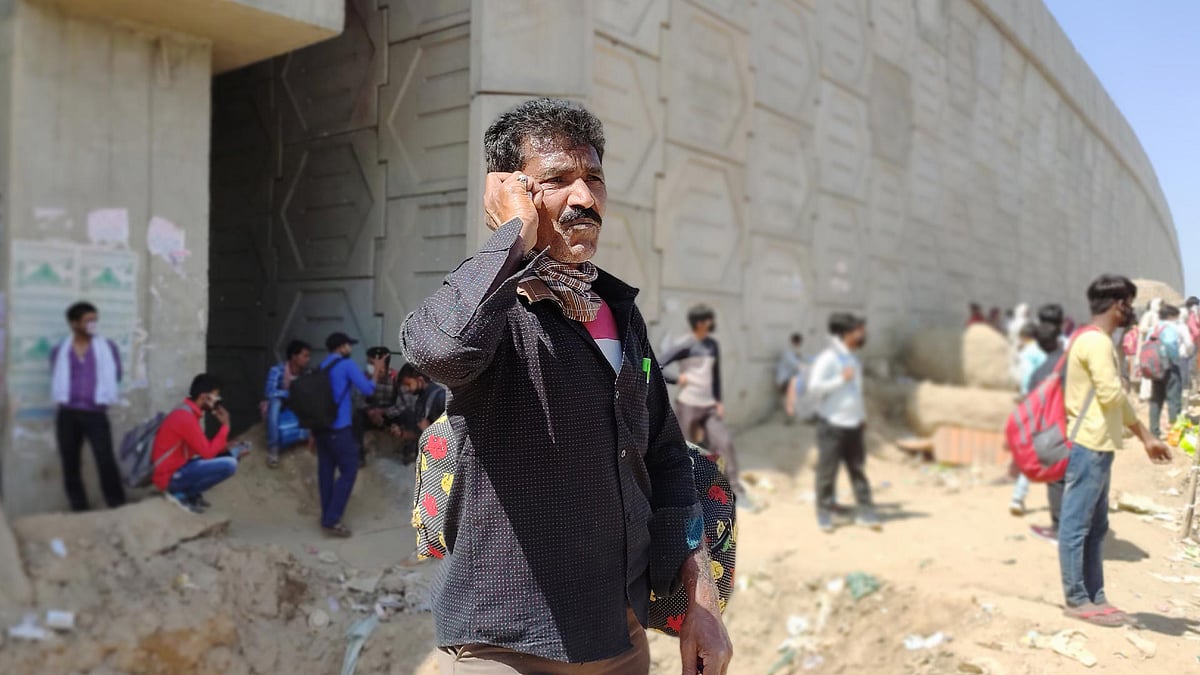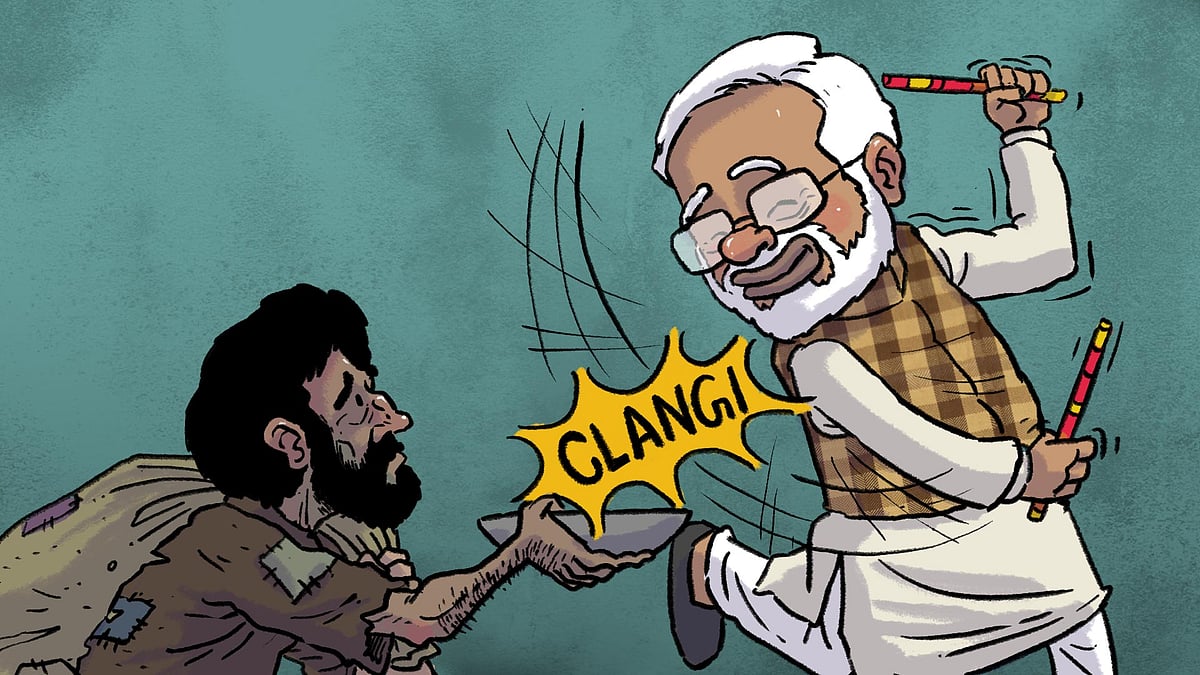What’s India doing to keep its prisoners safe from coronavirus?
India’s jails are overcrowded, dirty, and have rudimentary medical facilities. It’s a recipe for disaster.
India has gone into lockdown to contain the spread of coronavirus. The unprecedented measure, however, is causing immense suffering, especially to the poor and the migrant workers who are now walking hundreds of miles to get home. The lockdown also risks the safety of prisoners.
At a press conference recently, Michael J Ryan of the World Health Organisation warned: “We cannot forget migrants, we cannot forget undocumented workers, we can’t forget prisoners in prisons...they may be serving sentences but they deserve no less protection under the law than others. We must leave no one behind.”
India’s jails are notorious for lack of sanitation. Almost every cell houses four to five inmates who often sit together and meet in large halls; toilets are dirty; medical facilities are rudimentary.
A report released last year by the National Crime Records Bureau said India’s prisons are extremely overcrowded, and have been for a long time. In 2016, for example, 1,412 prisons across the country housed 4,33,003 inmates as against their combined capacity of 3,80,876. The following year, this ratio was 4,50,696 to 3,91,574 in 1,361 prisons. In 2018, as many as 4,66,084 people were held in 1,339 prisons with a total capacity of 3,92,230.
In a pandemic, this is a recipe for disaster.
There is, thus, a growing demand to release at least those prisoners who have been incarcerated for long, or whose cases are pending cases in courts. They can be paroled and sent home for two or three months.
As of March 31, India has reported 1,251 cases of coronavirus infection, with 32 deaths.
Overcrowded prisons
Of India’s 4,66,084 prisoners, 4,46,842 are men and 19,242 women. As per the NCRB report, of the 1,339 prisons currently functional in India, 144 are central jails, 628 sub divisional jails, 404 district jails, 77 open jails, 41 special jails, 24 women’s jails. Twenty one are categorised as ‘other jails’. Most of the inmates are held in central jails. As on December 31, 2018, they contained 2,09,278 people as against the capacity of 1,75,820.
The district jails house 2,06,518 inmates as against the combined capacity of 1,55,490.
Delhi, at 14, has the most central jails while Uttar Pradesh has 61 district jails, the most of any state.
The NCRB report elaborates on the appalling numbers. As many as 3,23,537 inmates — over two-thirds of the prisoner population — are under trial. Only 1,39,488 of the prisoners are convicted, while 2,384 people are in detention as a precautionary measure.
Among the undertrial prisoners, as of December 31, 2018, as many as 40,217 had been in jail for a year or two, 22,359 for two to three years, 14,316 for between three and five years, and 5,104 for over five years.
Supreme Court’s order
On March 24, the Supreme Court asked all states and union territories to set up committees, comprising at minimum the chairperson of the state’s National Legal Services Authority and the director general of prisons, to find out which prisoners among the undertrials and those sentenced to seven years or less are suitable for release or parole, along with the duration of parole or the suspension of sentence entirely. This means even prisoners who have committed a crime for which the maximum sentence is seven years or who are already serving seven years of imprisonment can be paroled or released.
Passing the order, a bench led by Chief Justice SA Bobde directed that the committees meet once a week.
Commenting on the order, senior lawyer Virag Gupta said: “Articles 141 and 142 of the Indian constitution provide the Supreme Court two unique powers. The first of which is to decree special instructions or procedures to ensure correct implementation of its orders. The Supreme Court’s judgements and orders become the law of the land. Therefore, the second one is more of an institutional authority than a power.”
He added, “The Supreme Court has the institutional authority to pass any order it deems necessary for implementing its instructions to the letter. The undertrial prisoners who lack legal representation, lack a basic understanding of the law or don’t have the financial means to support themselves. The court has ordered their release many times earlier.”
“Furthermore,” Gupta continued, “The terror of coronavirus has triggered mass hysteria and riots in many prisons across the world. To prevent this from happening in India, the court has issued these new orders to ensure the release of as many prisoners as possible through parole, bail or release. Prison authorities all over the country have received the order digitally, and they must implement them. It requires no further discussion.”
Following the apex court’s order, the Uttar Pradesh government declared that it would release 11,000 prisoners, including 8,500 undertrials, on personal bonds for eight weeks.
The Maharashtra government has released 601 prisoners in the past three days.
Tamil Nadu released 58 prisoners from the Madurai central jail and 21 prisoners from the Theni district jail.
Tihar’s turn
The Tihar Jail administration also plans to parole around 3,000 prisoners.“In the next three-four days we are trying to parole up to 1,500 prisoners. We’ll release 1500 undertrial prisoners after that to reduce the prison population,” the jail’s superintendent, Sandeep Goyal, told Navbharat Times. “This is being done to reduce the risk of infection from the coronavirus, but dangerous criminals will not be a part of this exercise.”
The jail’s spokesperson, Raj Kumar, told Newslaundry: “We don’t have the authority to release anyone. Following the court’s orders, we have compiled a list of approximately 3,000 prisoners and forwarded it to the court and state authorities. Who gets released or not, depends entirely on the discretion of these authorities. The court has the authority to release undertrial prisoners, whereas the state government can release those who have been convicted. We have completed our job. All that remains is the court’s and state government’s seal of approval.”
Tihar’s inmates include famous and powerful people such as Om Prakash Chautala, former Haryana chief minister, and Mohammad Shahabuddin, former MP from Bihar.
Is there a possibility of some of the political figures being released? “According to the Supreme Court’s guidelines, there are about 3,000 people eligible for release. We have forwarded the whole list to the court and the government,” Raj Kumar replied. “We cannot name anyone at this moment.”
The Supreme Court’s order is especially significant for Uttar Pradesh because of its large prisoner population. So, what has the state done following the order?
“Nothing concrete has been done after the court’s instructions,” said UP prison administration’s PRO, Santosh Verma. “Senior officials will meet soon to discuss this matter. We will decide who to release after that and will share a list of names with the government and the court.”
In view of the Supreme Court’s order, the All India Progressive Women’s Association has demanded the release of those held in Uttar Pradesh and Delhi for protesting against the citizenship law and the National Register of Citizens.
“Many protesters along with Nitin Raj and Ashwini Yadav were arrested under false charges at Lucknow’s Ghantaghar. United Against Hate’s Khalid Saifi too was arrested and tortured under false charges,” the association said in a statement. “To keep these political prisoners imprisoned during an epidemic is putting their lives in danger. They must be released promptly.”
The association’s secretary, Kavita Krishnan, told Newslaundry: “The purpose of the Supreme Court’s decision is to reduce the prison population. Under these circumstances, people arrested from different places while protesting should be released immediately. Their crimes are not severe enough to warrant long imprisonment. Courts are functioning at minimum capacity because of coronavirus lockdown, and nobody can help these people with bail proceedings. The state must release all political prisoners right away in this unprecedented crisis.”
There are also several political prisoners in India’s jails currently, including the activists arrested in connection with the Bhima Koregaon violence case who are lodged in Maharashtra’s jails. It remains to be seen if any of them get a reprieve.
Susan Abraham, who is fighting the cases of some of these activists, told Newslaundry: “These people are in prison because of politics, not because they committed a serious crime. We have appealed to the Maharashtra government to grant them bail immediately. The government should release these prisoners right away, but we can neither meet them nor talk to them over the phone anymore. If because of security reasons, nobody can meet the prisoners they should at least let them talk to their families. This prohibition is bewildering. We shall see what the Maharashtra government does after the Supreme court’s orders, but we hope that the government releases them soon.”
Safety measures
After the coronavirus outbreak, Italy changed many prison rules to improve safety. Inmates were not allowed to meet any visitor, even family. This caused prison riots, and many lives were lost in the violence.
Most prisons in India have also barred prisoners from meeting anyone from outside. “We started imposing this rule from March 18-19. We allow no prisoner to meet anyone from outside,” said Rajkumar. “Prison officials are explaining the circumstances to inmates and they too understand the gravity of this situation, we have had no agitations within the jail. Prisoners understand that under nationwide lockdown, their family or friends will also face lots of problems while travelling.”
Uttar Pradesh has also imposed this restriction on all prisoners, nobody is allowed a visitor. Santosh Verma said, “This virus is highly contagious, so we’ve stopped all prisoners from meeting anyone from the outside. The main reason for this is the visitors themselves. They come from all over the country and sit together in a waiting room. If even one visitor is infected, he or she’ll end up infecting the whole prison population. We have yet to receive any such report from different jails in UP.”
Asked about the contingency measures put in place in Tihar Jail, Rajkumar said, “A quarantine ward and an isolation ward have been prepared inside the jail. New arrivals are being kept in the quarantine ward while anyone with travel history is being kept in isolation. If we find anything suspicious in someone who has returned from a trip overseas, we’ll send them to a hospital for treatment. A team of doctors is available here all the time, we have encountered no case yet.”
Given that Uttar Pradesh has over 1,00,000 prisoners, the most of any state, what is it doing to prevent the outbreak of coronavirus inside its jails?
“Prisons of UP have been sanitised. It’s the prisoners who are making these masks, so every prisoner has one,” Santosh Verma said. “In addition, we’re sending the masks made by our inmates outside for the public. We are providing all the required facilities within our jails.”
He added, “A provision for isolation is in our manual from the beginning. Whenever a new inmate arrives, we keep the prisoner in an isolated room. Prisoners are being told to keep a safe distance from each other because there is only one isolation room. We have improved the hygiene and sanitation inside the jail. All these steps have made sure that despite a population of 1,03,000 in many jails, we have not seen a single case from any jail in the state.”
A version of this report was published on Newslaundry Hindi.
 Broke and desperate in Lal Kuan: Meet the migrant workers heading home
Broke and desperate in Lal Kuan: Meet the migrant workers heading home Why India doesn’t seem to care about its poor even during a pandemic
Why India doesn’t seem to care about its poor even during a pandemic